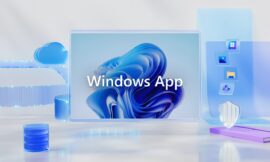Everything is absolutely promising in the new Apple Macs with their M1 chip. The promise in terms of performance and efficiency seems to have been fulfilled according to the first independent analyzes, but not everything is perfect in this new generation.
And it is not precisely because it is a drastic generational leap, one that can and does generate conflicts and that will require a period of adaptation for everyone: from developers to users. For those who are thinking about whether to bet on these teams or wait a bit for the situation to settle (or for new, even more powerful and striking models), we have some arguments that can make the wait more reasonable.
More ambitious designs (and with more connectivity)

One of the most widespread complaints about new Macs is that they don’t look like new. Apple has used the same chassis of the MacBook Air, MacBook Pro and Mac mini and has simply integrated into them the new motherboards and components of these computers, but has not taken the opportunity to renew their design.
It is something strange considering that Apple usually takes advantage of these opportunities to make it clear that any jump of this type is noticeable inside but also outside. It has not been like that in these first Macs with the M1 chip, and that leaves the door open to changes of all kinds in future MacBook, iMac or Mac Pro.
Not only that: connectivity is probably one of the few pending issues at the hardware level of these new Apple computers, which continue to bet on the USB-C port as the only way to expand their options, but also only offer a maximum of two ports . That may be enough for many users, but it certainly leaves little room for maneuver for the more ambitious in this case, although hubs and dongles may come to the rescue.
These first models make other sacrifices compared to Windows-based competitors that in certain cases have, for example, higher resolution screens, 5G connectivity, more expansion ports apart from USB-C (I am very afraid that we will not see that on Macs) or those touch panels in convertible computers that, we insist, some predict for certain models of the Mac. Who knows.
It is to be hoped that the future Macs that arrive from now on will take the opportunity to give some other surprise in their design – the iMac is one of those that could see a remarkable transformation – but also in new connectivity and expansion options for some teams that will surely end up differentiating themselves in this section as well.
Transitions take time, mostly due to software
A generational leap like this is no small feat, and Apple knows it well. Their own directors have already warned that they expect the transition between the Intel Mac and the M1 Mac to be completed in approximately two years.
That is the time that is given in Cupertino so that they, as well as users and developers, complete this adaptation process that will make us have fully functional hardware and software.
Apple has already put many elements in place to facilitate and accelerate that transition, while it has left other areas such as native Windows support in the hands of Microsoft . Its native applications fully benefit from the new architecture, but even “legacy” Mac applications with Intel mics run smoothly in many cases thanks to Rosetta 2.
Others, of course, cause problems, and here too there is work to be done. In Forbes they recently pointed to various applications that are incompatible with Rosetta 2 or that have problems working with this emulation layer, and certainly this first generation of users will be in a way “guinea pigs” that allow to detect those problems so that developers correct them.
Some are betting that the limited compatibility with iOS apps and games could even point to future touchscreen Macs. Whether or not that is true, all of this is part of that transition that will undoubtedly take some time and that in software is especially key: not all developers adapt to the new ecosystem equally quickly, and that will make some applications or games take time. in being ready to work natively on Apple M1 chip.
That is reason enough not to be in too much of a hurry and wait precisely for the software, both in terms of the operating system and applications and games, to be more mature.
Apple M1 Chip: Everything that comes after will be better
Many of the independent reviews we have seen in the last few days make it clear that the performance of these Macs with the M1 chips is truly fantastic , and in many cases it surpasses both current and past Macs as well as portable Windows computers and even the latest PCs. generation in some benchmarks.
These results make it clear that Apple’s proposal with the M1 is really solvent, but it is that someone said it recently: everything that comes later will be better. The M1 chip is just the first iteration in a family that is really promising and in which Apple has a lot of leeway.
In fact, at the moment we find ourselves with a processor with four powerful cores and four more efficient, but it is possible that future Apple chips will make use of other combinations of cores and also make use of clock frequencies, voltages and higher but acceptable consumption by teams of the future.
The argument is certainly valid for almost any other technological product, but it is even more reasonable before a first generation of products that takes such a radical leap compared to what Apple had proposed so far in its Macs. This is therefore another good argument for wait.
Also Read | The great challenges of teaching machine human language


